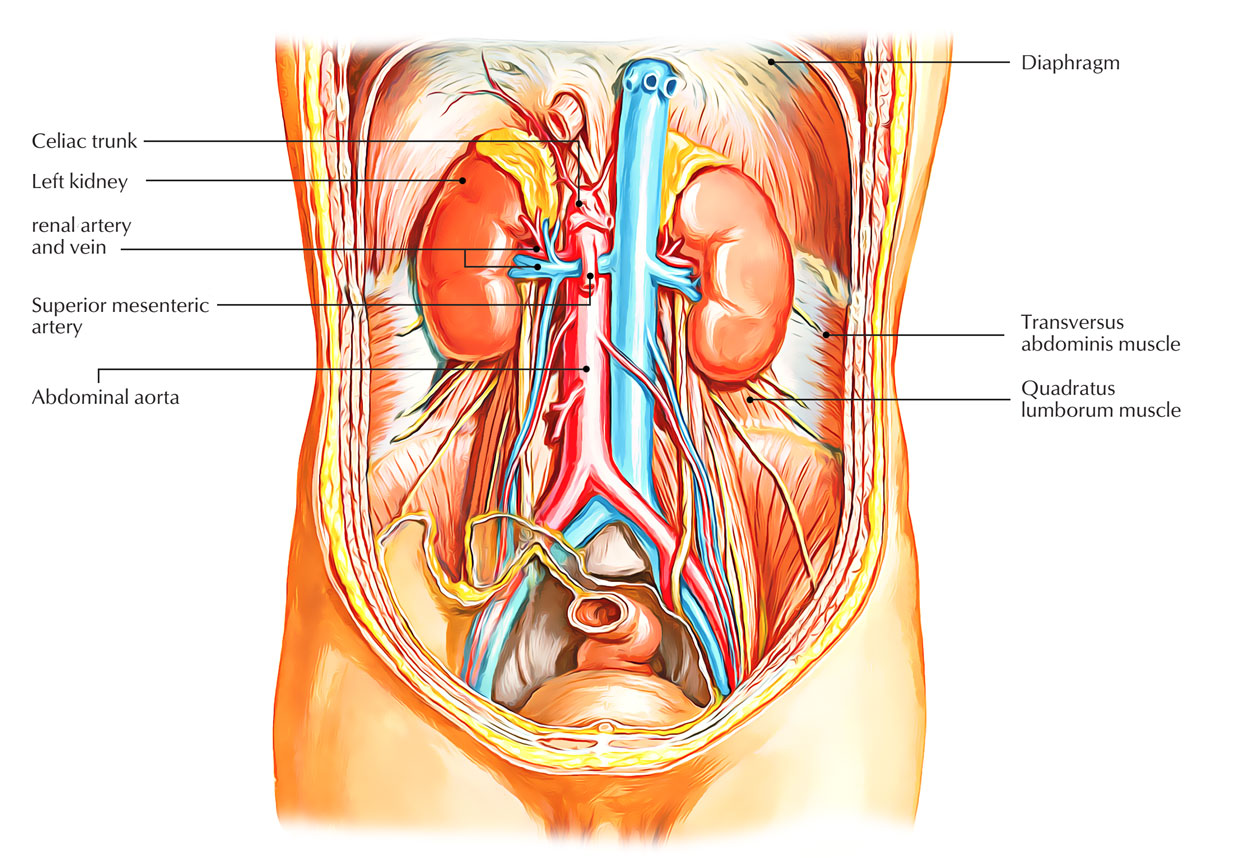Renal artery is among the pair of large blood vessels that expand via the abdominal aorta and participate in each kidney. At the inner concavity of every kidney there is an entrance, referred to as the hilum, through that the renal artery enters. After travelling through the hilum, the renal artery divides generally within two large branches, and every branch divides within a variety of smaller arteries, that bring blood to the nephrons, the working systems of the kidney. Blood that has actually been processed by the nephrons eventually reaches the renal vein that brings it back to the inferior vena cava and to the right side of the heart.

Renal Artery
Origin
It emerges via the abdominal aorta at the L1-2 vertebral body level, inferior to the origin of the superior mesenteric artery.
Course
The right renal artery routes inferiorly and enter posterior to the IVC and the right renal vein to reach the renal hilum. The left renal artery is much shorter as well as develops somewhat more inferior to the right primary renal artery. Left renal artery routes more horizontally, posterior to the left renal vein to get in the renal hilum. Renal arteries are in between 4-6 cm in length and typically 5-6 mm in size.
Branches
Each renal artery produces small branches in its proximal course, prior to dividing within dorsal and ventral rami. These branches are really small and typically not imagined on imaging research studies:
• Inferior adrenal artery
• Ureteric artery
• Capsular artery
The dorsal and ventral rami divide within segmental branches within the renal hilum prior to getting in the parenchyma:
• Apical artery
• Anterior superior
• Anterior inferior (middle)
• Inferior renal arteries
• Posterior segmental renal arteries
These afterwards divide within lobar branches that together branch within interlobar, arcuate as well as interlobular arteries. The afferent arterioles, that supply the glomeruli, stem via the interlobular arteries.
Clincal Significance
• The renal arteries provide to the kidneys of a typical individual at rest 1.2 litres of blood per minute, a volume equivalent to around one-quarter of the heart’s output.
• Therefore, a volume of blood equal to all that discovered in the body of an adult human is processed by the kidneys as soon as every four to five minutes.
• Although some physical conditions can hinder blood circulation, there are specific self-regulatory systems intrinsic to the arteries of the kidney that permit some adjustment to tension.
• When the overall body blood pressure increases or drops, sensory receptors of the nervous system situated in the smooth muscle wall of the arteries are impacted by the pressure modifications, and, to make up for the blood pressure variations, the arteries possibly broaden or contract to keep a consistent volume of blood circulation.

